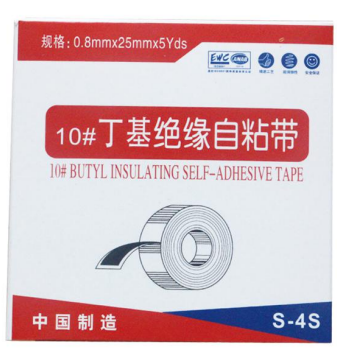The Advantages of Linerless Rubber Splicing Tape
In the realm of industrial applications and electrical insulation, lineless rubber splicing tape has emerged as a pivotal solution for various splicing and wrapping needs. Combining innovative design with practical functionality, this type of tape is increasingly favored across multiple sectors for its performance and user-friendly features.
What is Linerless Rubber Splicing Tape?
Linerless rubber splicing tape is a specialized adhesive tape that does not come with a protective liner. This unique characteristic allows for immediate use, reducing preparation time and enhancing workflow efficiency. The tape is typically made from high-quality rubber materials that provide excellent elasticity and durability, making it ideal for splicing wires and cables as well as insulating electrical components.
Key Features and Benefits
1. Ease of Use One of the most significant advantages of linerless rubber splicing tape is its ease of application. Without the presence of a liner, users can quickly unwind the tape and stick it directly onto the surface. This feature streamlines the wrapping process and increases productivity, particularly in time-sensitive projects.
2. Superior Adhesion The rubber-based adhesive provides strong, long-lasting bonds to a variety of surfaces. Whether used on plastic, metal, or other materials, linerless rubber splicing tape adheres firmly, ensuring that spliced connections remain secure and insulated.
3. Temperature Resistance Linerless rubber splicing tape is designed to withstand extreme temperatures, making it suitable for both indoor and outdoor use. This property is essential for applications in environments where thermal fluctuations can impact the integrity of electrical systems.
linerless rubber splicing tape

4. Moisture and Chemical Resistance The tape is also resistant to moisture and a wide range of chemicals, which is crucial for protecting electrical connections in harsh environments. This feature helps in preventing corrosion and electrical failures, particularly in industrial settings where exposure to chemicals is common.
5. Versatility Linerless rubber splicing tape is not limited to electrical applications. It can be used in various industries, including automotive, construction, and manufacturing. Its versatility makes it an indispensable tool for technicians and workers across several fields.
6. Cost-Effectiveness By eliminating the need for a liner, this tape can potentially reduce material costs. Additionally, its durability and resistance to environmental factors mean that it can decrease the need for frequent replacements, leading to lower overall expenses.
Applications
Linerless rubber splicing tape is predominantly used for electrical splicing and insulating. However, it has found additional applications in other areas - Automotive For wrapping and insulating wiring harnesses and components. - Construction For sealing conduits and protecting connections in outdoor installations. - HVAC Systems For insulation purposes in heating, ventilation, and air conditioning systems.
Conclusion
In conclusion, linerless rubber splicing tape stands out as a highly effective, user-friendly solution for a variety of industrial and electrical applications. With its ease of use, strong adhesive properties, and durability against adverse conditions, it outweighs traditional linered tapes in many situations. Its versatility further cements its place as an essential tool in various sectors, from automotive to construction. As industries continue to evolve and adapt to new challenges, linerless rubber splicing tape is likely to remain a key component in ensuring the reliability and efficiency of electrical systems. Whether you’re a technician, engineer, or DIY enthusiast, this tape is an excellent addition to your toolkit.
-
The Versatility of Cloth Insulation TapeNewsApr.07,2025
-
The Power of Self Amalgamating Silicone TapeNewsApr.07,2025
-
The Importance of Weatherstrip Seal: Your Ultimate Protection SolutionNewsApr.07,2025
-
Tape Electrical Insulation: A Reliable Solution for Your Electrical NeedsNewsApr.07,2025
-
Discover the Wonders of Electrical Splicing TapeNewsApr.07,2025
-
Discover the Versatility of PVC Electrical TapeNewsApr.07,2025
